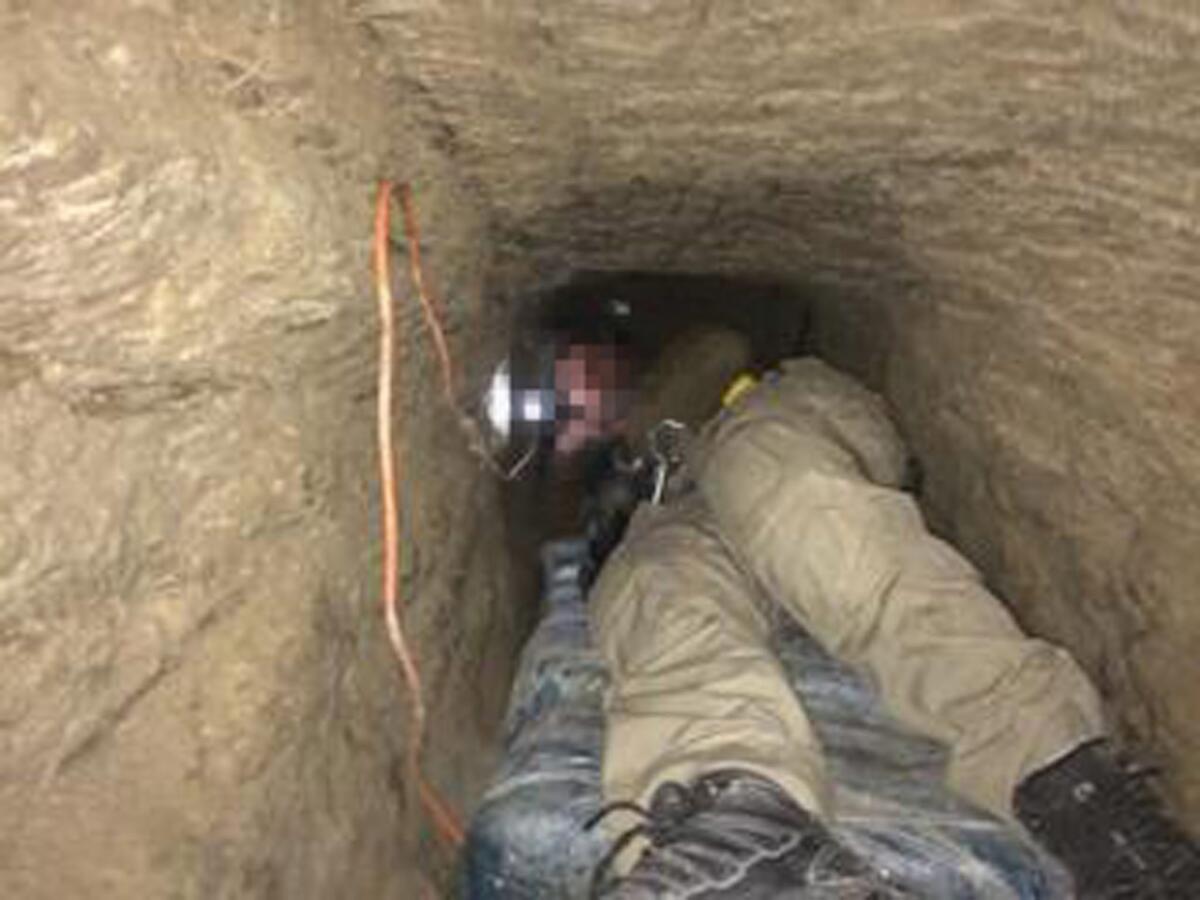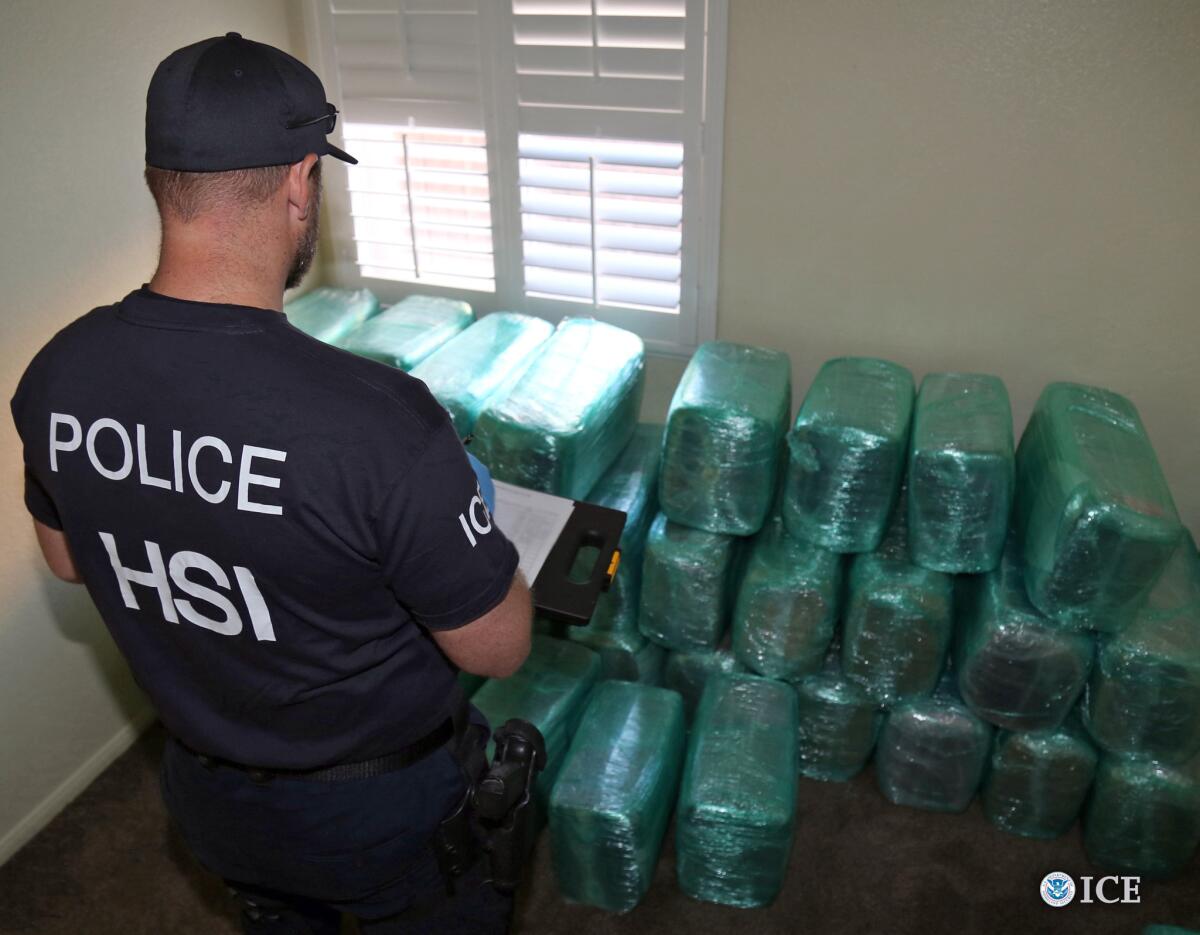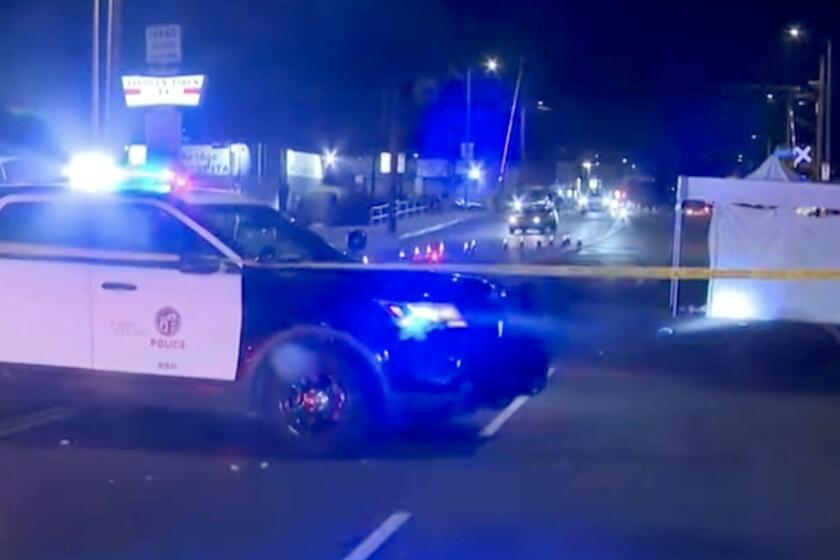Tight squeeze: Economics make border drug tunnels narrower
In just a single month this spring, U.S. immigration officials uncovered three cross-border drug tunnels, the latest of more than 75 cross-border tunnels discovered in the last five years.
What's different about the recent tunnels is that most are significantly smaller and don't boast the technological advances that officials saw a few years ago.
William Sherman, special agent in charge for the U.S. Drug Enforcement Administration in San Diego, said drug cartels have moved toward tunnels that require a smaller investment because of the high risk of being discovered.
"It saves them money.... In at least the previous six tunnels, we've hit those before they got any narcotics through. So it was a tremendous amount of money and resources that they wasted when we took those off," Sherman said. "I think [they're thinking], ‘Hey, they're finding these pretty quick, we maybe shouldn't put as much money into them, even if it takes us more time to get the loads through.'"
David Shaw, special agent in charge for U.S. Immigration and Customs Enforcement's Homeland Security investigations, said the cartels' primary goal is simply to get their product to the United States as quickly as possible.
"It's all about the investment," he said. "So less investment, they get more bang for their buck."

Also notable in the recent discoveries is the emergence of drug organizations other than the dominant Sinaloa cartel, among them the Cartel de Jalisco Nueva Generación.
Agents with Homeland Security Investigations, in partnership with the DEA and U.S. Customs and Border Protection's Border Patrol and Air and Marine Operations, formed the San Diego Tunnel Task Force in 2003.
They credit their success in recent years to more effective collaboration among agencies. If Border Patrol agents see something suspicious while out in the field, for example, they often alert the task force, which launches an investigation. They are in communication daily.
"The partnership is really how we do it," Shaw said. "We have all the different expertise, the different abilities, the different capabilities. I think when we bring that together, that's really our best fighting."
NEWSLETTER: Get the day's top headlines from Times Editor Davan Maharaj >>
Before the Sept. 11, 2001, terrorist attacks, agencies going after drug tunnels worked under separate departments. Customs [now known as Homeland Security Investigations) worked under the Department of Treasury, while the Border Patrol and DEA worked under the Department of Justice.
Jurisdictions weren't clear and information wasn't shared quickly, said Lauren Mack, a spokeswoman for U.S. Immigration and Customs Enforcement.
After Sept. 11, Border Patrol and HSI were moved under the newly created Department of Homeland Security. At the same time, heightened security at ports of entry pushed more drug smuggling underground.
Today, law enforcement agents talk to business owners and community members along the border about what to do if they witness suspicious activity. Old-fashioned detective work has also bolstered the effectiveness of the task force. But as their approach becomes more effective, drug smugglers are changing their techniques.

Among the tunnels uncovered in recent weeks was an extremely narrow, zig-zagging pathway in Otay Mesa, described as one of the longest ever found along the California-Mexico border.
It was about a half-mile long -- or about nine football fields -- but 3 feet in diameter, which likely kept costs down. Officials said it was small enough that the smugglers had difficulty maneuvering.
But unlike many of the other recently discovered tunnels, the Otay Pallet tunnel included railing and ventilation systems, lighting and a large elevator, U.S. Atty. Laura Duffy said.
As part of the discovery, officials seized more than 14,000 pounds of marijuana and more than 2,000 pounds of cocaine, one of the largest seizures of cocaine on the California-Mexico land border.
It was among more than 75 cross-border tunnels that have been found in the last five years, mostly in California and Arizona, according to the U.S. attorney's office. Though the cost to build and operate the tunnels varies, authorities estimate most cost more than $1 million.
Cost of remediation - rendering the tunnels unusable, often by filling them with concrete - has cost CBP an estimated $8.7 million since fiscal 2007, according to a 2015 report by the Department of Homeland Security.
In many ways, tunnels have been woven into the fabric of the war on drugs. The world's most powerful drug kingpin, Joaquín Guzmán Loera of the Sinaloa cartel, nicknamed "El Chapo," famously escaped prison cells in Mexico twice through intricately built tunnels, most recently in 2015.
Authorities believe the Sinaloa cartel, regarded as the largest drug importer into the U.S., continues to operate most of the tunnels, often hiring engineers and other professionals to design them. They declined to name the organizations connected to specific tunnels they've uncovered. In some instances, organizations that aren't linked to particular cartels have built a tunnel and then rented or sold it, making it difficult for officials to determine which cartel is involved.
See more of our top stories on Facebook >>
Ev Meade, director of the Trans-Border Institute at the University of San Diego, said the region is a hot spot for drug smuggling.
"San Diego and parts of Arizona have seen this proliferation of tunnels. That's not true in other parts of the border. Some of it is geography, but it's also the nature of the business. According to the DEA and most authorities, we're still in the general territory of the Sinaloa cartel," he said.
At the same time, Meade said larger cartels are breaking up into smaller and often more dangerous factions.

Perhaps a more alarming development from the dismantling of the Otay Pallet tunnel on April 16 was the discovery that the Cartel de Jalisco Nueva Generación - known to authorities as CJNG - is possibly active in the tunneling industry.
"We're certainly seeing a shift in Tijuana. CJNG is getting a lot of momentum down there, they have a lot of resources down there," said Sherman of the DEA. "As far as tunnels go, this is the first time we have any indication that anybody other than Sinaloa was putting product through the tunnels."
The cartel, led by Nemesio "El Mencho" Oseguera Cervantes, has made a quick ascent into Mexico's narco-trafficking network, rivaling the power of Sinaloa.
Cervantes, a native of Michoacán and a Sinaloa alum, is believed to have been involved in drug trafficking activities since the 1990s, according to the U.S. Treasury Department.
The group rose to power around 2009 with the decline of the Valencia-Milenio cartel. Its growing presence in Tijuana has been quick -- and bloody. Drug-related killings accounted for more than 80% of Tijuana's 670 homicides in 2015, the highest number in five years, according to the Baja California attorney general's office.
Edgardo Buscaglia, a senior research scholar in law and economics at Columbia Law School, said a diverse, organized crime network in Mexico has resulted in a large variety of tunnels, each reflective of its own organization.
"In that regard you will see many types of tunnels, some very sophisticated tunnels and others very basic," he said. "The sophistication of the tunnels reflects the sophistication of the organized crime network that traffics all their stuff up north."
The Galvez tunnel, a now-defunct passageway between the U.S. and Mexico in Otay Mesa, was built to transport marijuana into a warehouse about 760 feet north. But the tunnel was never used.
Authorities discovered the passageway in 2009 as part of an investigation and what they call "outreach," or collaboration with community members in the area who reported suspicious activity.
A series of four narrow ladders leads to a steep 85-foot decline, where the air is thick. The tunnel had a phone and railroad system, electrical wiring and ventilation. About 6 feet high and 4 feet wide, it's considered a more developed tunnel, about twice the height of those recently discovered.
It originated 60 feet south of the border in a warehouse on Galvez Street, where it was covered by a restroom floor controlled by a hydraulic lift.
Now, the Galvez tunnel is a training site for Border Patrol agents.
Sanchez writes for the San Diego Union-Tribune.
ALSO
Underage Mexican drug mules are in for a shock in one Arizona county
School districts are a big reason for the rise in income segregation in the U.S.
Federal prosecutors drop case against Bay Area pot dispensary
Sign up for Essential California
The most important California stories and recommendations in your inbox every morning.
You may occasionally receive promotional content from the Los Angeles Times.







